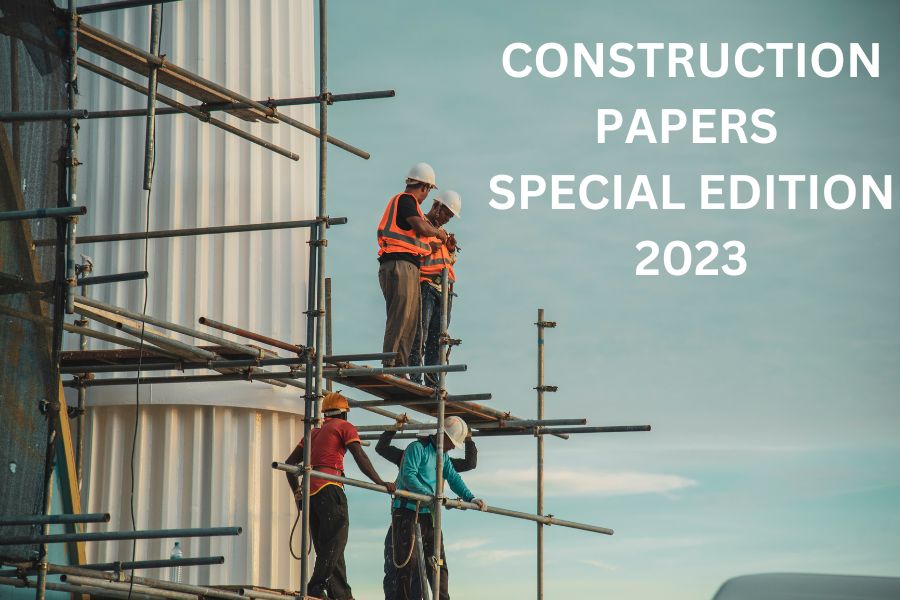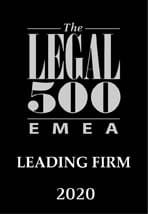This article gives a brief account of three of the unique concepts used in Hungarian construction law: the Certificate of Performance Expert Board, construction trusteeship and designer copyrights. The introduction of these arrangements has fundamentally altered the structure of construction law in Hungary, and they have been an integral part of the day-to-day activities of companies, regulators and other practitioners in the construction industry ever since.
The Certificate of Performance Expert Board
The Certificate of Performance Expert Board (CPEB) is an alternative venue for dispute resolution that operates alongside the Hungarian Chamber of Commerce and Industry. Under Act XXXIV of 2013, the CPEB has the authority to proceed as an expert board in disputes associated with the performance of architectural/engineering design and construction contracts. The CPEB was created to accelerate the process of recovering fees owed for contractual performance through the means of civil law.
The CPEB issues its opinions if engaged by the relevant parties, i.e., it may not appointed to act as an expert in litigious, non-litigious or regulatory procedures, or in criminal or misdemeanour cases. The only exception to this rule are lawsuits that are based on the CPEB’s own opinions, where an opinion can be amended, questions about it asked, or the chair of the relevant expert panel heard.
The CPEB, acting in a panel of three engineering experts, can issue opinions on (a) what works were performed, in terms of quantity and quality, in a project beyond doubt, (b) what works were not performed beyond doubt, and (c) the contractual value of the works performed, on the basis of the relevant budget items.
Additionally, the CPEB can also determine the extent to which the contractor’s fee is payable and any ancillary obligations securing a contract can be enforced. If the CPEB rules that there is no good cause for enforcing an ancillary obligation that secures a contract (in most cases, a bank guarantee), the bank that issued the guarantee “will not perform” its payment obligation under the guarantee agreement. The bank will not be required to make any payment in the period between the date when a CPEB procedure is initiated and the date when the extract of the CPEB’s opinion is delivered. As a result, if there is a dispute, a contractor that is required to have a bank guarantee in place can initiate a CPEB procedure and thereby have the bank’s payment obligation suspended even before the opinion is available.
It is important to point out that the CPEB may only examine whether or not a contract was performed in accordance with the underlying technical specifications. On the other hand, it may not examine the legality of drawdowns made under a bank guarantee on the basis of other breaches of contract, including, in particular, the enforcement of claims based on the contractor’s liability for contractual penalties, which is usually made with the help of bank guarantees.
Section 2(4) of the CPEB Act states that a contractor must inform the provider of the relevant security that a CPEB procedure has been initiated, and that the contractor must” ensure that the term of the legal relationship concerning an ancillary obligation securing the contract is extended”. The is provision is designed to prevent bank guarantees from expiring during the CPEB’s procedures.
It is important to clarify the meaning of the phrase “will not perform’ in Section 8 of the CPEB Act, i.e., what specific legal effect it will have if the CPEB rules that there is no good cause for enforcing an ancillary obligation, whether in whole or in part. There is a potential interpretation that the bank that issued the guarantee is released from its obligation to make payments under the guarantee with final effect, to the extent to which the CPEB’s opinion finds the enforcement of the ancillary obligation groundless. This interpretation appears to be mistaken for several reasons.
In the light of Section 1:6 of the Hungarian Civil Code [Guarantee Contracts], the enforcement of the rights granted in Sections 6:431 through 6:438 and of the related obligations is clearly a matter for courts to decide. Section 8 of the CPEB Act expressly does not override these rules, and therefore such an implied legal effect cannot be attributed to it. Sections 8/E and 8/H of the CPEB Act clearly state that the CPEB’s opinions qualify as evidence in lawsuits, and consequently they cannot be treated as resolutions that can settle legal disputes with final effect. This understanding is supported by the language of the CPEB Act, which expressly states that the CPEB’s panels may only issue opinions on the engineering and technical matters listed in the CPEB. Consequently, Section 8(4) of the CPEB Act can only be interpreted to mean that a payment obligation existing on the basis of a bank guarantee will not be in existence until a court (or court of arbitration) overrules the CPEB’s opinion on the relevant obligation that is secured by the guarantee. The CPEB’s opinion may suspend a payment obligation, but it cannot in itself terminate the underlying guarantee contract or payment obligation (or rule that it “is not in existence”), because it qualifies as a forensic expert opinion (evidence) rather than as a court judgment or other equivalent ruling.
For more information on the CPEB, please read our more detailed article here.
Construction trusteeship
The concept of construction trusteeship was introduced in Act LVII of 2009, with the detailed rules in Government Decree No. 191/2009 (“Government Decree”), in an effort to remedy a crisis situation that existed in the construction industry at the time and to avoid similar problems in the future. According to the commentary to the Act, the trusteeship scheme was there to prevent chain debt situations that resulted from contractors taking advantage of their subcontractors.
Construction trustees participate in construction projects that are not subject to Act CXLIII of 2015 on Public Procurement (“PPA”) but have a contract value that equals or exceeds the Community threshold specified in the PPA. Starting from 1 January 2022, the European Commission set the Community threshold at EUR 5,382,000, or HUF 1,883,592,360.
The operation of the trusteeship scheme is based on trusteeship contracts between developers and construction trustees. In addition to signing such a contract, a developer is required to open trusteeship account and ensure that funds equal to the fees agreed in the construction contract are available in that account by the start of the project.
Once the project starts, only the construction trustee may make payments from the trusteeship account to the members of the chain of contractors, i.e. the main contractor, subcontractors and sub-subcontractors, to the developer and, if there are trusteeship fees, to itself. There is an electronic register of subcontractors that is managed by the construction trustee in order keep track of the payments.
Payments can only be made on the basis of claims that are recorded in the register of subcontractors, while the issues of retention and suspension also have to be reckoned with. The construction trustee may make a payment to the main contractor on the basis of the main contractor’s claim that has fallen due against the developer, but it must retain any amounts that the main contractor have billed to the developer on the basis of works performed by its subcontractors but that have not yet been paid to the subcontractors. If the main contractor, then confirms that it has paid the relevant amounts to its subcontractors, the construction trustee will pay the retained amounts to the main contractor; and if such confirmation is not provided, the amounts will be paid to the subcontractors directly.
The payment of the balance of an amount stated in a certificate of performance issued to a subcontractor and the amount claimed by the subcontractor will be suspended for thirty days. This is a situation where the subcontractor is dissatisfied with the fee that is approved in the certificate of performance, and therefore the balance between the fee that the subcontractor considers fair and the fee stated in the in the certificate of performance will be retained by the construction trustee from the payment made to the main contractor. The subcontractor will have to initiate a dispute resolution procedure against the main contractor during the 30-day suspension period.
Designer Copyrights
Authors and designers hold copyrights in their works and designs automatically, without the need for registration. In Hungary, the meaning of copyrights and the system of copyright protection is defined in Act LXXVI of 1999 on Copyrights (hereinafter: “Copyrights Act”). A Register of Architectural Copyrights has been in operation since 1 January 2020.
Copyrights, which consist of economic and moral rights, are held by the author or, in the case of an architectural design, the architectural designer. The distinction between economic rights and moral rights is important: while an exploitation contract can be concluded with regard to economic rights (generally as part of the design contract), authors may not waive their moral rights and may not licence another party to exercise such rights even under a contract. Consequently, if a designer believes that the proposed alteration of a building they designed violates the integrity of their work, they may be entitled take action against the alteration even if they previously permitted the exploitation of the designs, i.e. the construction of the building and the adaptation of the design.
Economic rights include the right to exploit the work (design) and to license others to do same. In the case of architectural designs, exploitation includes the construction of the building and the alteration of an existing building. Additionally, reproduction is one of the most important forms of the exploitation of architectural designs. The construction or recreation of an architectural work conceptualised in a design, or even the construction of certain core elements of a design can qualify as the reproduction of the design.
Adaptation is also an important form of exploitation, and it means the alteration or modernisation of a building. However, not all renovations require an exploitation licence from the designer: a project where the objective is to restore the building to its original condition does not qualify as adaptation. On the other hand, if the project involves the addition of a new wing to the original building, it can qualify as an adaptation of the original work and therefore the designer’s permission may be required, and the designer may demand a fee for the licence – even after the adaptation has taken place.
One of the typical reasons for disputes over designer copyrights is the infringement of exploitation contracts. The Copyrights Act states that under exploitation contracts, authors (architects) grant a licence to use their work, and users (developers) are required to a pay fee in return. Disputes are often rooted in the parties’ failure to define the limits of the licence and what the fee is supposed to cover carefully enough. Additionally, the Copyrights Act requires an express permission for certain modes of exploitation, and therefore a generic licence (e.g., “The designer transfers all such rights and licences to the developer”) is not sufficient in these cases. The author’s express consent is required for the transfer of the licence to a third party, for the granting of additional licences to third partes and for the adaptation of the work. It is also important to note that if the exploitation contract does not identify the permitted modes of exploitation, the licence will be limited to the modes and extent that are strictly necessary in order to realise the objectives of the contract.
The Copyrights Act includes special rules to protect the integrity of architectural works. Under these rules, any change in an architectural work or the design of an engineering structure that has an impact on the external appearance or intended use of the structure qualifies as an unauthorised modification of the work. As noted above, an architect will be entitled to the protection of the integrity of their work even if they have permitted the exploitation of the design. This issue typically has relevance if alterations are carried out on a building, and in particular, if the architect disagrees with the proposed changes because they believe that the changes will affect the external appearance or intended use of the building.
On the other hand, copyrights are limited by ownership rights as long as they are exercised properly, which does not mean a violation of the architect’s copyrights in the building. The Copyright Dispute Resolution Board stated in the past that an architect could invoke the protection of integrity if, as a result of an alteration, “the external appearance of the building is distorted to a degree where the essence of the work is affected, or its intended purpose is modified in a manner that can harm the author’s reputation.” Judicial practice holds that “the owner can exercise their ownership rights, with or without a violation of the author’s moral rights spelled out in the Copyrights Act, if the interest in the modification of the work, or even the destruction of the building as the physical embodiment of the work, is based on an overriding (“real”) private or society-wide need that causes the enforcement of copyrights to be an improper exercise of rights.”
For more information on designer copyrights, please see our more detailed articles here and here.
Authors: András Fenyőházi András and Evelin Varga




